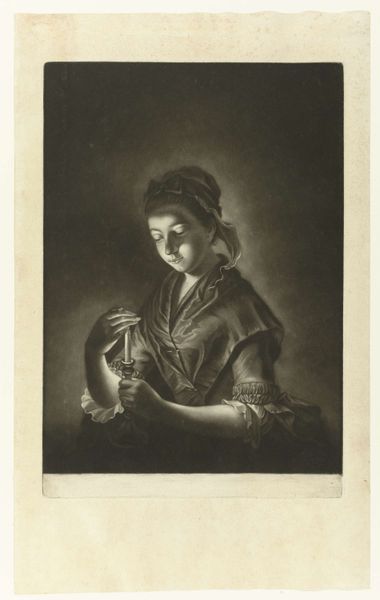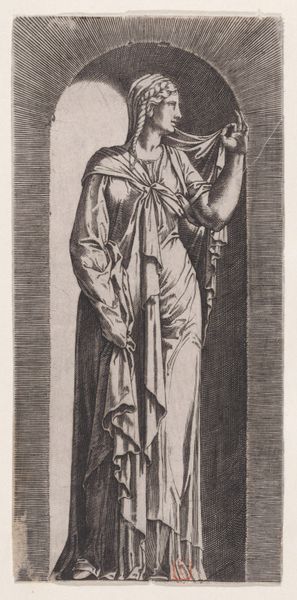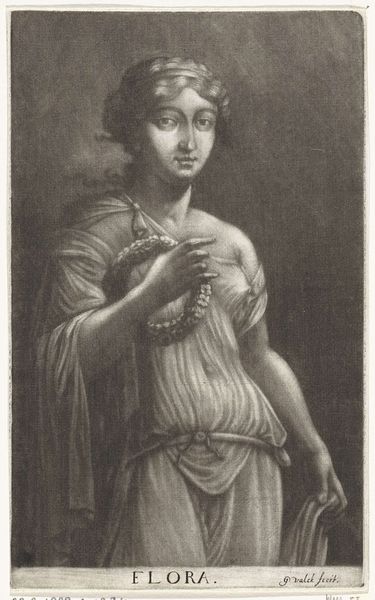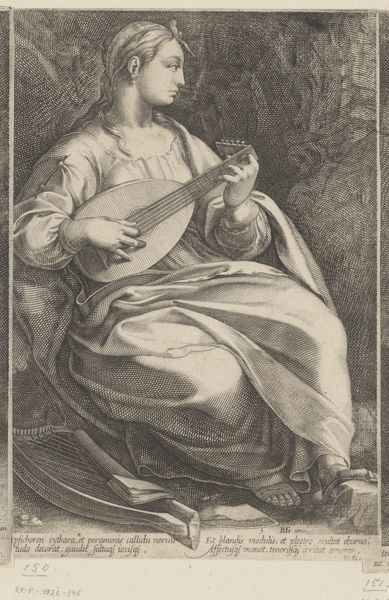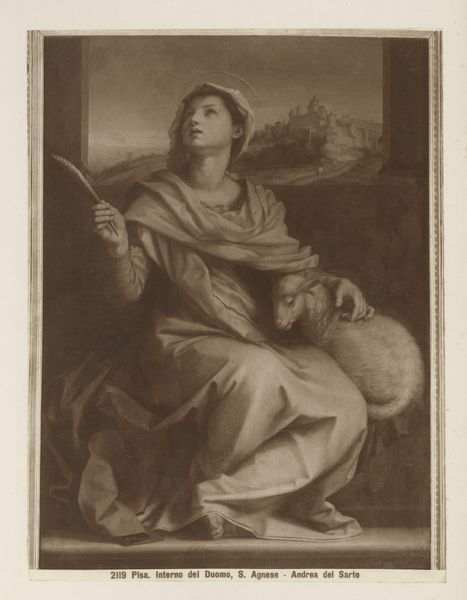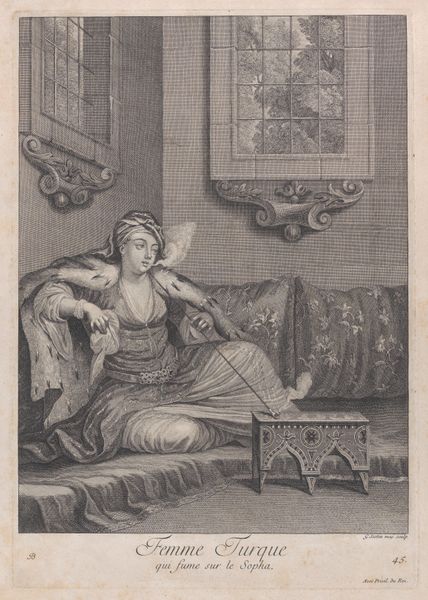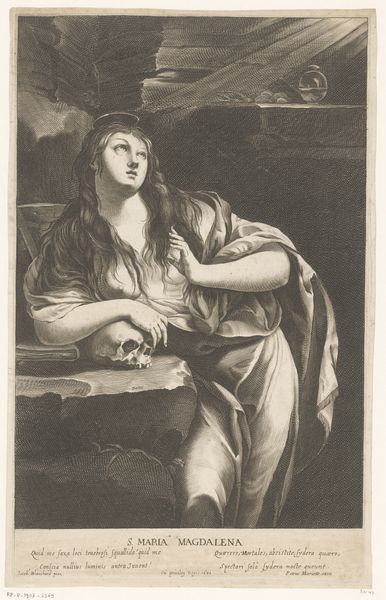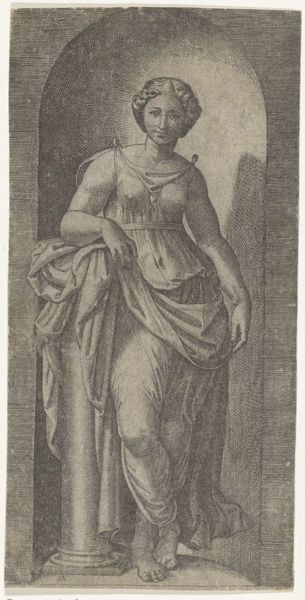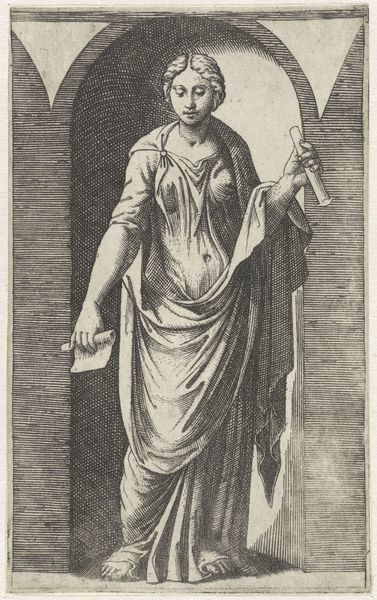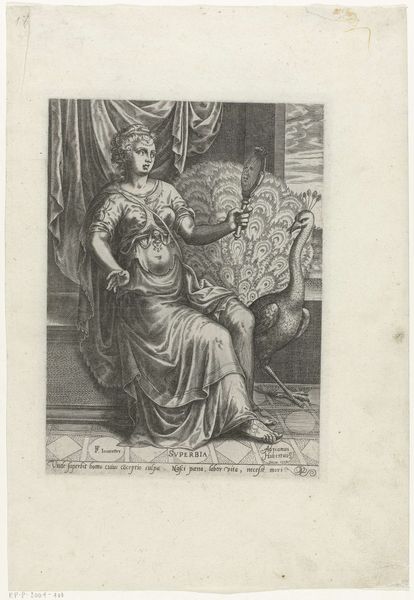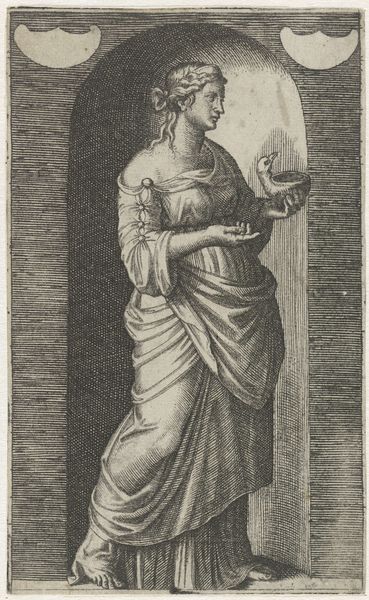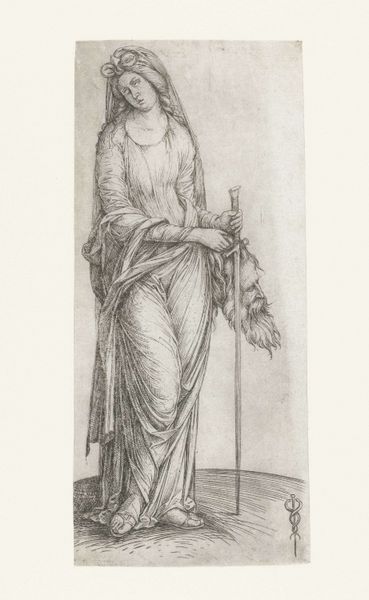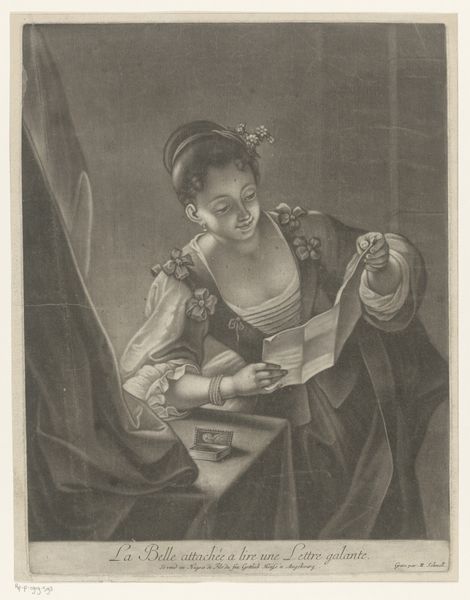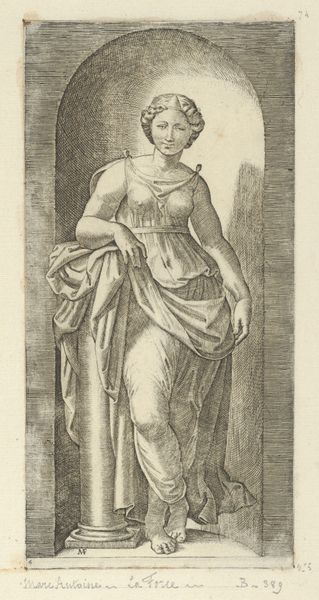
Dimensions: height 353 mm, width 246 mm
Copyright: Rijks Museum: Open Domain
Editor: Here we have "Girl with a Candlestick by an Open Window" by John Greenwood, an engraving dating from the late 18th century. The heavy use of chiaroscuro really sets a secretive mood. What stands out to you about this print? Curator: For me, it's about the production. Think about the labour involved in creating an engraving like this – the meticulous carving into the metal plate, the layers of ink, the physical press. It’s a commercial print, produced in multiples. Who was buying these? Editor: So, you're suggesting it's about understanding the work through its creation and its intended audience? Curator: Exactly! Consider the materials, too. The paper itself – how was it sourced, what was its quality? And the ink, crucial for conveying the image. These things tell us about trade routes, artisanal skill, and the accessibility of art in that period. Also notice that the artist chose the intaglio printmaking, where the image is incised into a surface. Is there any indication as to why he did so, as opposed to other printing methods that he may have had access to? Editor: I guess, engraving allowed for finer details and sharper contrast with the limited technology back then. I didn’t initially think about the work itself as a product. Curator: And that’s the shift! It connects "high art" to everyday consumption. Genre painting of a young girl is elevated, through light play, and subsequently disseminated into domestic environments by printmaking technology. By considering all this we are given context, understanding not only the aesthetic intention of Greenwood, but the social. Editor: That's a great way to see it, the engraving as an artifact of its time and its intended market. It gives a whole new dimension to this seemingly simple domestic scene.
Comments
No comments
Be the first to comment and join the conversation on the ultimate creative platform.
